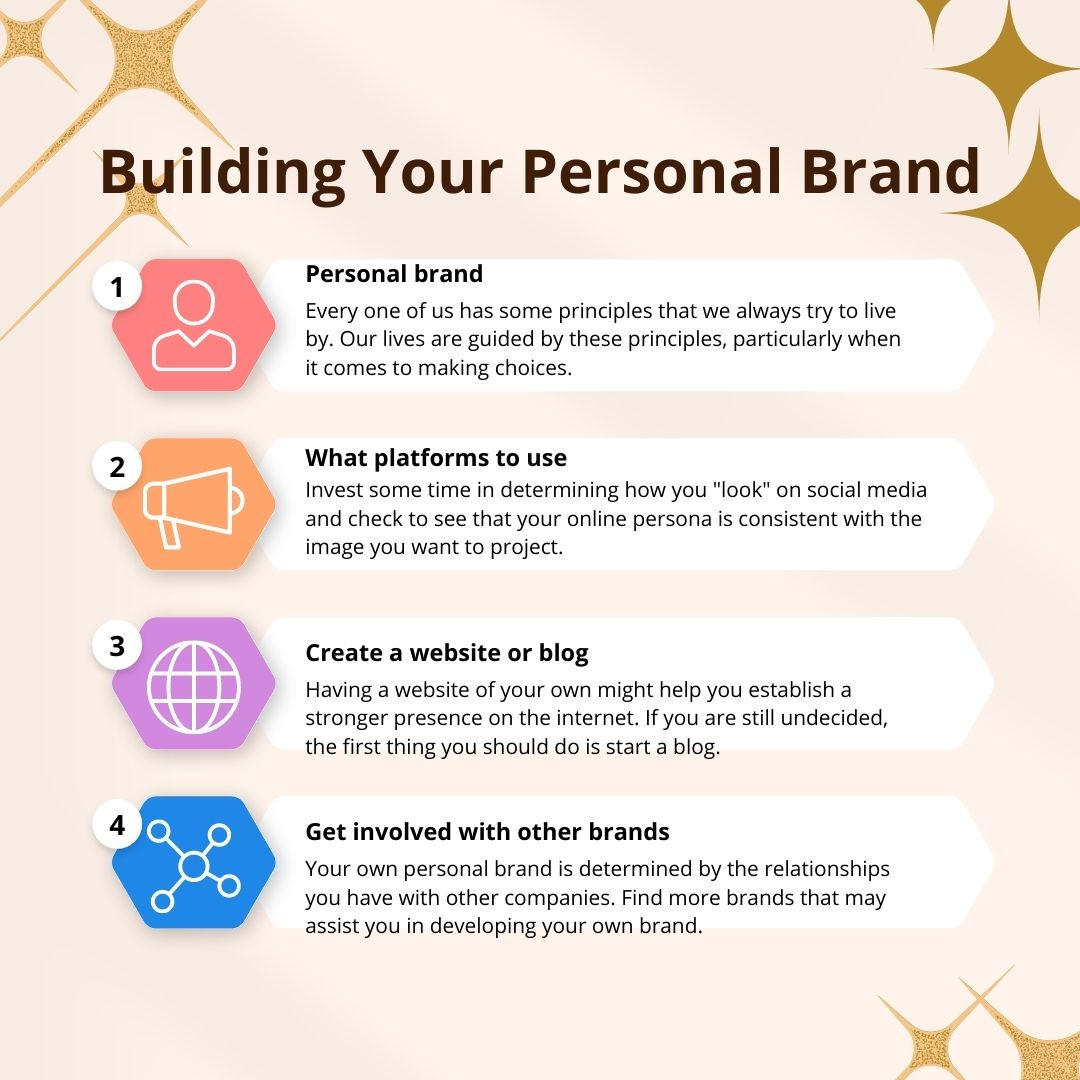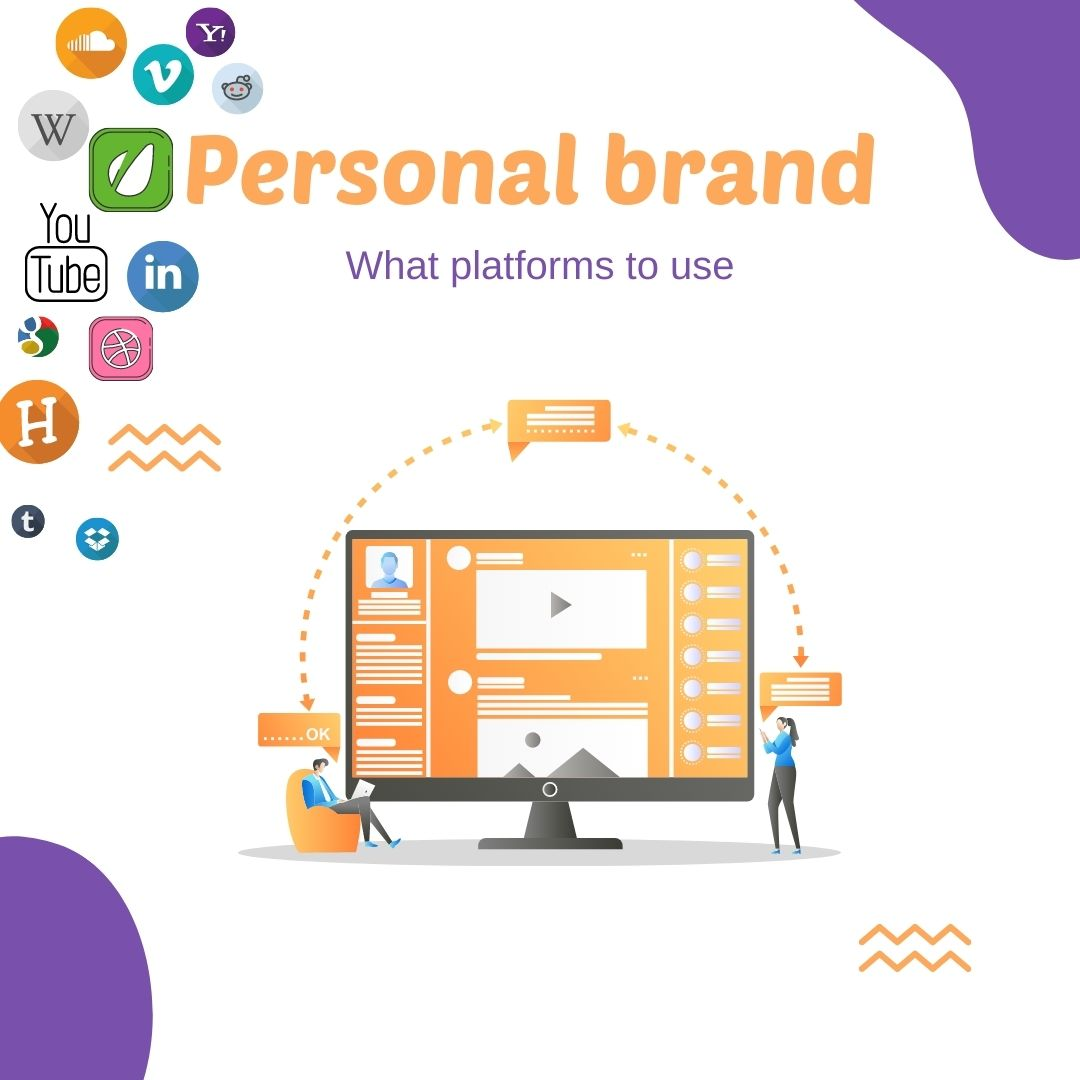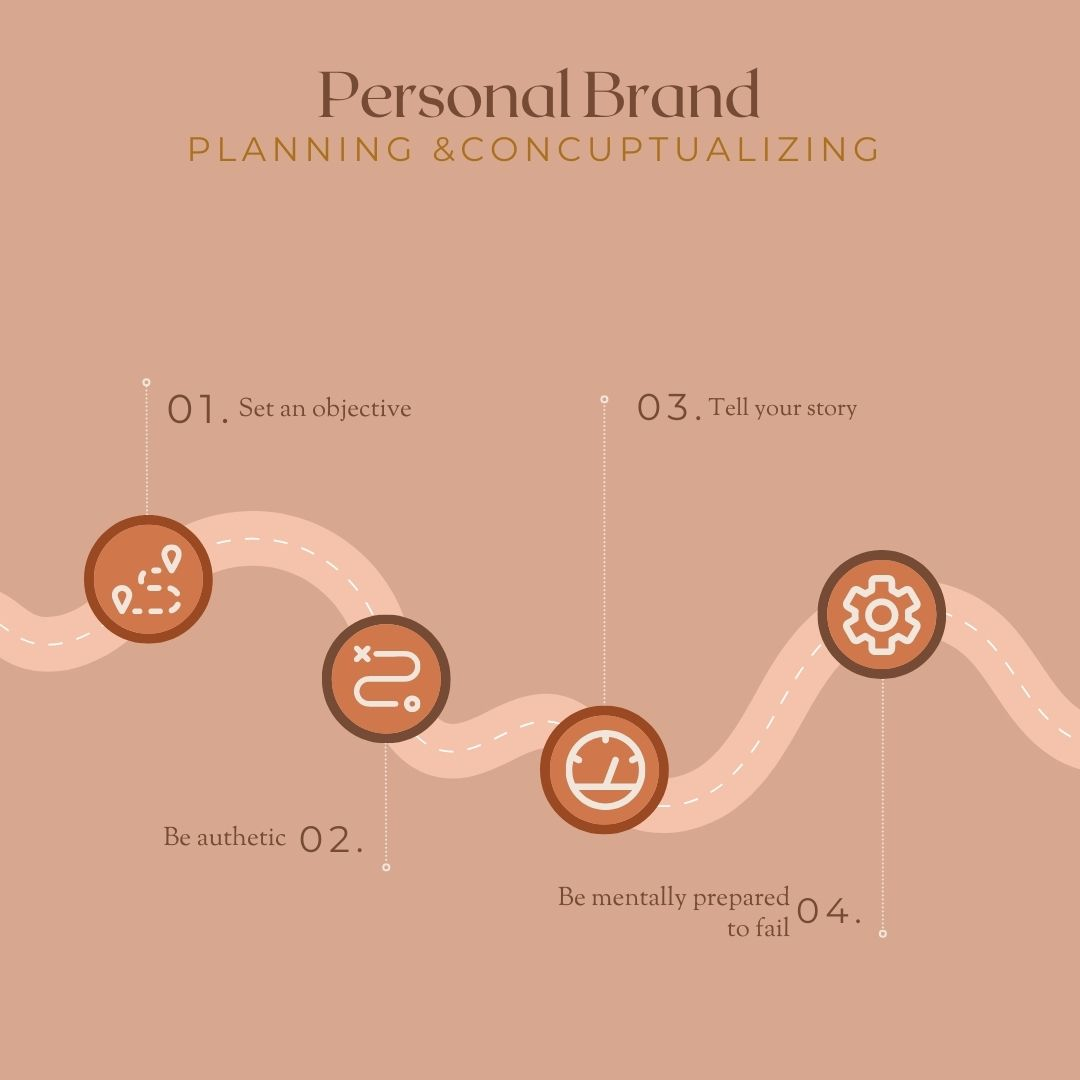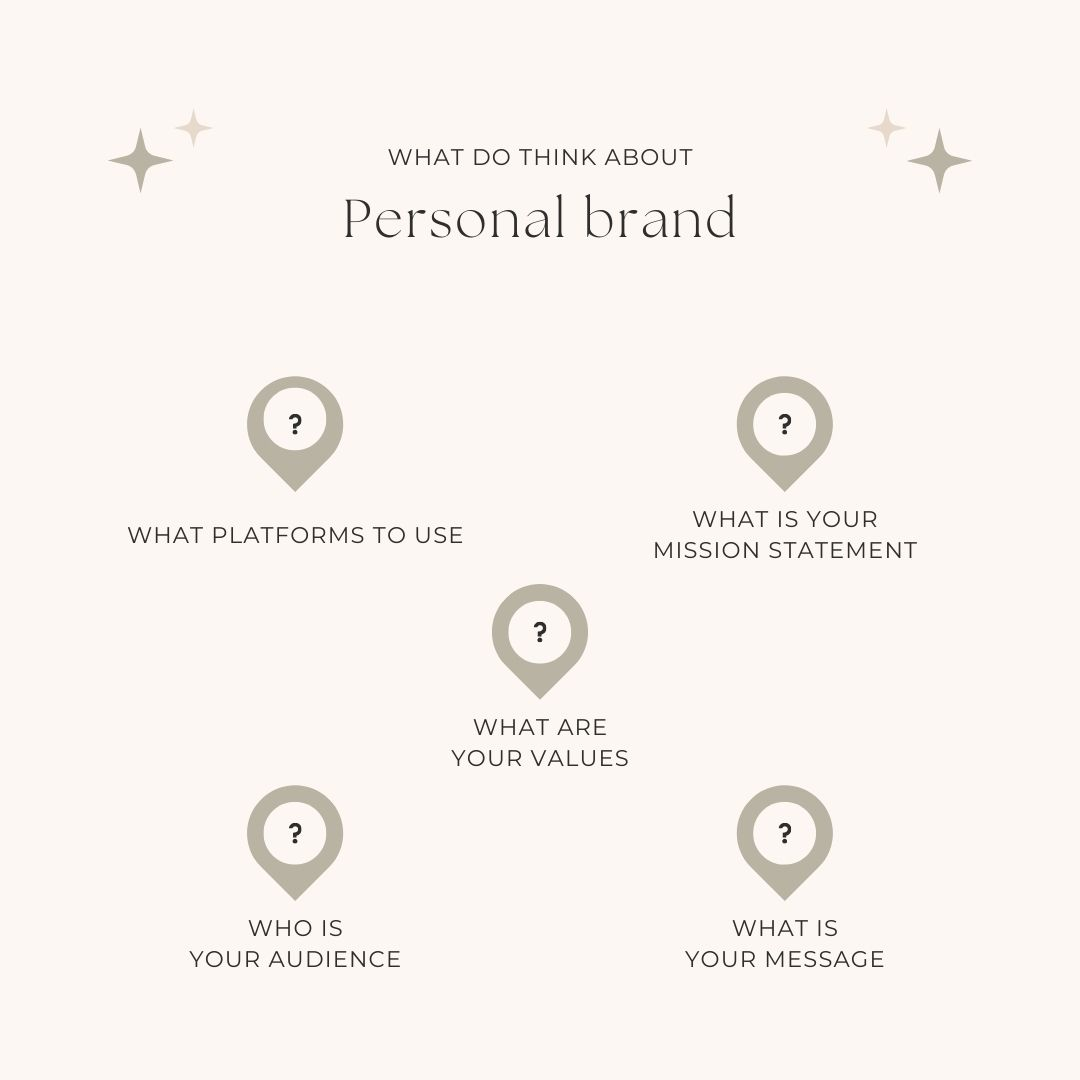When you are asked whose voice comes to mind when you think of the narrating in documentaries, who do you think of first? Morgan Freeman? Perhaps Sir David Attenborough? Both of these individuals are widely known for their contributions as narrators and this popularity was brought about by their unique branding –in this case their unique voices.
Brand awareness plays an important role in most aspects of marketing. According to Zhang (2020), it plays an important role in consumer decision-making, market performance, marketing mix, and brand equity. By establishing a brand, you will be able to guide public perception concerning your business. The reality is that brands and consumers are inextricably linked (Keller, 2019), with brands existing for consumers who in turn, value the brands.
Establishing your brand is no easy feat. Personal branding is a strategic process (Gorbatov et al., 2018), and having an effective personal brand means positioning it at a competitive advantage in the minds of your target audience.
In this article, we will be helping you understand the importance of a brand and its value, what actions you can take and consider when building and strengthening your brand, and how this benefits you!
Brand Value
Brands are reliant on consumers and consumers define the value of a brand. This is what we call “brand value” and according to Gupta et al., (2020), it drives brand competitiveness through marketing orientation. The study affirms that differentiating and positioning your brand as something unique helps build brand value and that brand value fuels your brand’s competitiveness against other brands.
Successful brands engage a wide audience. If you are just starting out in building your brand, planning is essential. Here are some of the things to take into consideration when starting a brand.
Planning & Conceptualizing your Brand

Think of brands as characters that you portray to an audience. As a character, your brand has traits that should make it relatable to capture an audience. When it comes to branding, these traits should reflect your own.
Here are some things you should consider when planning your brand:
- Set an objective - focus on the demographics you want to target with your brand. It will make it easier for you to create content around your brand and help shape how others should view your brand.
- Be authentic - people who acted disingenuously in the past are ready to suffer a loss than admit they lied (Ayal et al., 2016). For example, managers exaggerate travel expenses, consumers engage in wardrobing, citizens evade taxes, or download illegal music. But more often, it is below what is possible at maximum due to ethical dissonance - the conflict between benefitting from unethical behavior and maintaining a positive moral image. In the case of competing brands, copying an established brand can have a negative effect on your brand’s image and more often than not, people will call you out on it!
- Tell your story - this adds to your genuine and authentic factor. Build a brand that reflects your own personal narrative.
- Be Mentally Prepared to Fail - every opportunity comes with its own risks. Entertaining the possibility of failure while you are growing your brand can help prepare you for the roadblocks that come with running a business.
At this point, you should have a broad idea of what your brand is about. Let’s move on to who you want your brand to engage with.
Personal brands cater to a wide demographic, while established ones are associated with specific niches. An article by Steenkamp (2020) on Global Brand Building and Management in the Digital Age states that
“Amazon pioneered global digital sales channels and marketplaces; eÿeka! and others developed global online crowdsourcing; Uber, Airbnb, and others invented global P2P platforms; and Google, Siemens, and others the global IoT, long before these phenomena caught the attention of marketing academia.”
If you want to grow your brand, you need a clear definition of which parts of the population you want to cater to.
Understanding the Market and your Target Audience

Strategic planning provides structure to help you make day-to-day decisions that follow a larger vision, create a direction for your goals, and maximize your options for influencing your environment.
By being strategic with your brand, you can help specify the target demographic which fits your brand and business. One way to make your brand strategy is by curating the content associated with your brand.
Create a content strategy
In the digital age, businesses and brands can benefit from Digital Marketing. A study on higher education institutions in the country and their engagement on Facebook (Figueira, 2018) found these interesting observations:
- Yale puts more effort into strengthening its image.
- Stanford, followed by Berkeley and Princeton, focus their posts mainly on society and communicating events.
- Stanford does not use its brand name posts.
- The Research category is more visible at MIT and Columbia.
- Columbia has a clear hierarchy of self-promoting areas.
For start-up brands and projects, a high-quality content marketing strategy is an adequate and appealing alternative (Poradova, 2020). The study highlighted the following key components that contribute to an effective marketing strategy:
- Content - it is essential in innovating marketing strategies. Whether this can be through blogs or social networks, the goal is to provide for information and solutions that your customer is looking for.
- Communication - it is necessary to communicate to effectively reach strategic goals. And can be categorized into two basic forms:
- Internal Communication - if you have a team, proper communication can foster good relationships through cooperation and teamwork.
- Customer Relationships - it will be beneficial for your brand to establish a personal connection between your employees and customers.
Bala and Verma (2018) provided an extensive list of digital marketing tools and techniques that you can employ to reach your audiences; some of them include search engine optimization (SEO), content marketing, and social media optimization.
Different content types encourage varying levels of engagement and this can affect how users respond to posts based on what they are interested in (Saad & Yaacob, 2021).
After planning the type of content you want to associate with your brand, make sure that the content is of high quality and to produce content consistently to maintain your audience.
Why is it Important to produce High-Quality Content Regularly?
It shouldn’t come as no surprise to anyone that when consumers perceive your content positively, it adds to your brand’s image. Quality content provides credibility to your brand which in the long run and it can deepen the trust consumers place in the brand.
Ok and colleagues (2011), provide a discourse on the relationship between a brand’s value, credibility, and prestige. In summary, the results of the study suggested that customer perception on utilitarian value of a service or an item shapes brand credibility, while social value enhances brand prestige. In turn, good brand credibility and brand prestige also positively affects brand trust.
High-quality content helps consumers identify your brand. A study by Wu & Chen (2019) observed that enterprises that create high-value product attributes and brand personality to promote product value strengthened their overall brand image and enhanced consumers’ brand identification. These benefits contributed to areas of sustainable management and the competitiveness of these businesses.
Now that we’ve gone over the importance of planning and curating material for your brand, let’s move on to the next step –how to build and grow your brand.
Platforms for Growing your Brand

Here are some platforms you should look into when you start growing your brand:
Social Networking Sites (SNS)
Social media platforms provide the benefit of connecting you with friends and acquaintances. By connecting you with people you know, you can get easy access to ideas and feedback for you to tailor your brand to fit consumer wants and needs.
Large Social Networking Sites include Facebook, Twitter, and Instagram with research on branding in social media focusing largely on Facebook. Brands that engage in SNS marketing activities, improve their overall customer outcome (Wang et al., 2021), including customer loyalty and future sales.
If you’re planning to engage on international markets, you should be aware that some nations restrict access to select networking sites in favor of other platforms. China, a large consumer market for many international brands, uses WeChat and Weibo platforms due to government policies.
Media Sharing Sites
These platforms will allow you to reach an audience through media content (images and videos). Images and videos provide visuals which express your brand identity and which allow your viewers to relate to your brand openly on the platform.
A study by Li and Xie in 2020 found that including images in posts increased engagement on social media sites. And because of the algorithm, ensuring your videos can capture the attention of your viewers can generate revenue in the form of video advertisements and sponsorships.
Voorveld (2019) listed YouTube and Pinterest among the sites with the most active users. But there are also other media sharing sites like Vimeo and emerging ones like TikTok –leaving you with plenty of options to choose from!
These are just some channels you can look into if you want to build your online persona and establish your brand’s identity. Regardless of their background, anyone can maximize the benefits of social media when they incessantly curate, monitor, and invest in their online personae (Scolere et al., 2018).
Though reaching out to many people is important in growing a brand, it is important to assess if your strategies are effective or if they need to be adjusted.
The importance of assessment and adjustment

Content is an element of innovative marketing strategies (Poradova, 2020) and should indicate consumer engagement with your brand. Metrics associated with your brand content should then be used to assess your marketing strategies.
Koob (2021) enumerated the following traits to ensure effective engagement with your audience based on empirical data:
- Effective content marketing requires clarity and commitment to content marketing strategy and production on the part of the organization.
- These strategies should be heavily-curated to meet your target audience’s needs.
Koob’s study also highlighted the importance of measuring performance and using the data obtained from your consumers as guidance for improving your offerings to your target audience. Allowing individuals to specialize in a specific role within your business and restructuring and organizing your business once in a while also provided a positive influence on consumer engagement.
What will you gain by building a personal brand from scratch?
Once you build an establish brand, it can represent an important source of intangible investment (He & Calder, 2020). Expenses you’ve accumulated in the brand should be viewed as investments on your part. View the brand as an asset rather than as an expense.
Another benefit to you is career satisfaction. Personal branding leads to greater career satisfaction, fully mediated by perceived employability (Gorbatov et al., 2019). Once your brand becomes self-sustaining, you will have spare time to attend to your other needs.
By owning the brand and investing in it, the payoff is related to your brand’s perception by consumers. Consumer’s emotional and rational experiences with your brand are significant predictors of brand loyalty, brand awareness, and perceived quality (Zolo et al., 2020). Goodwill can be cultivated by providing a positive impact on your brand.
For example, if you grow your brand around students, you can make them aware of the process of personal branding and help them regulate their posting and disclosure on social media.This can have a positive impact on your brand image and increased goodwill toward your brand.
Maintaining goodwill with your audience will also push some of them to personally publicize your brand –providing advertisement at no cost to you. Other benefits of having good relations with your audience can be reflected in your brand’s reputation through word of mouth. After all, public opinions greatly influence your brand’s image.
Conclusion
Building a brand is a continuous process. The fear that it may fail should not stop you from establishing and growing one! The early stages of building your brand need meticulous attention.
Being strategic at conceptualizing and tailor-fitting your brand to specific audiences will go a long way. Having a brand reflects on you as a person and projects a specific persona to your target audiences. For you to reap the benefits of a strong personal brand, you must be willing to invest in it heavily and try to adapt to changes in your market.
Advancements in technology have given rise to platforms which can help you build and grow your brand. The quality of your content, how often you release new content, and how you engage with your audience will determine how your brand is perceived by the public eye. The best personal brands are adaptable, consistent, and genuine. Make sure to keep that in mind when you’re building your own personal brand from scratch!
Frequently Asked Questions (FAQs)
How do you create your brand identity?
Your brand identity is how you want your consumers to see and interact with your brand. There are many ways to create a strong brand identity, some of which include creating a mission statement, having a recognizable logo, and being consistent with your marketing materials.
How do I find my brand voice?
Your brand voice is how you communicate with your target audience. To find your brand voice, consider what tone would be most appropriate for the type of relationship you want to have with your consumers. For example, if you want to come across as friendly and approachable, your brand voice might be more casual.
How to build your brand?
There are many ways to build your brand. You can start by creating high-quality content, engaging with your audience, and being consistent with your branding. You can also use social media and other online platforms to reach a wider audience.
Personal branding is the process whereby people market themselves and their careers as brands. Personal branding involves managing one’s name and reputation as a brand. Personal branding happens when people promote themselves in a way that is consistent with how they want to be perceived by others.
What is brand building and how does one get a successful brand?
Brand building is the process of creating a strong and recognizable brand identity. A successful brand is one that is able to connect with its target audience and create a positive association in their minds. Brand building requires a lot of time and effort, but it can be extremely rewarding.
What is the best way to build brand awareness?
There are many ways to build brand awareness. Some of the most effective include using social media, conducting marketing campaigns, and partnering with other brands. Another way is to have your unique brand logo and unique brand voice. By having these attributes, you can have brand positioning on the product that you are marketing. Moreover, having existing customers comment on your products or talk about your products will also help in building brand awareness.
How does Social Media help with my brand's target audience?
Social media is a great way to connect with your target audience. You can use social media to share your brand stories, promote your products or services, and engage with your customers. Social media can also help you build brand awareness and reach a wider audience. Moreover, it can help by giving your brand a visual identity as you post relevant content.
What are some ideas for social media posts?
Some ideas for social media posts include sharing behind-the-scenes content, promoting new products or services, hosting giveaways, and asking questions. You can also use social media to show your brand’s personality and give your customers a glimpse into your company culture. Also, using hashtags and a cleaver tagline can help you reach a wider audience and connect with other like-minded people. Lastly, you could use your brand's message as a post, which could gain potential customers and loyal customers.
Does email marketing help?
Email marketing can be a great way to connect with your target audience. You can use email marketing to share your brand story, promote your products or services, and engage with your existing customers and potential customers. Email marketing can also help you build brand awareness and reach a wider audience.